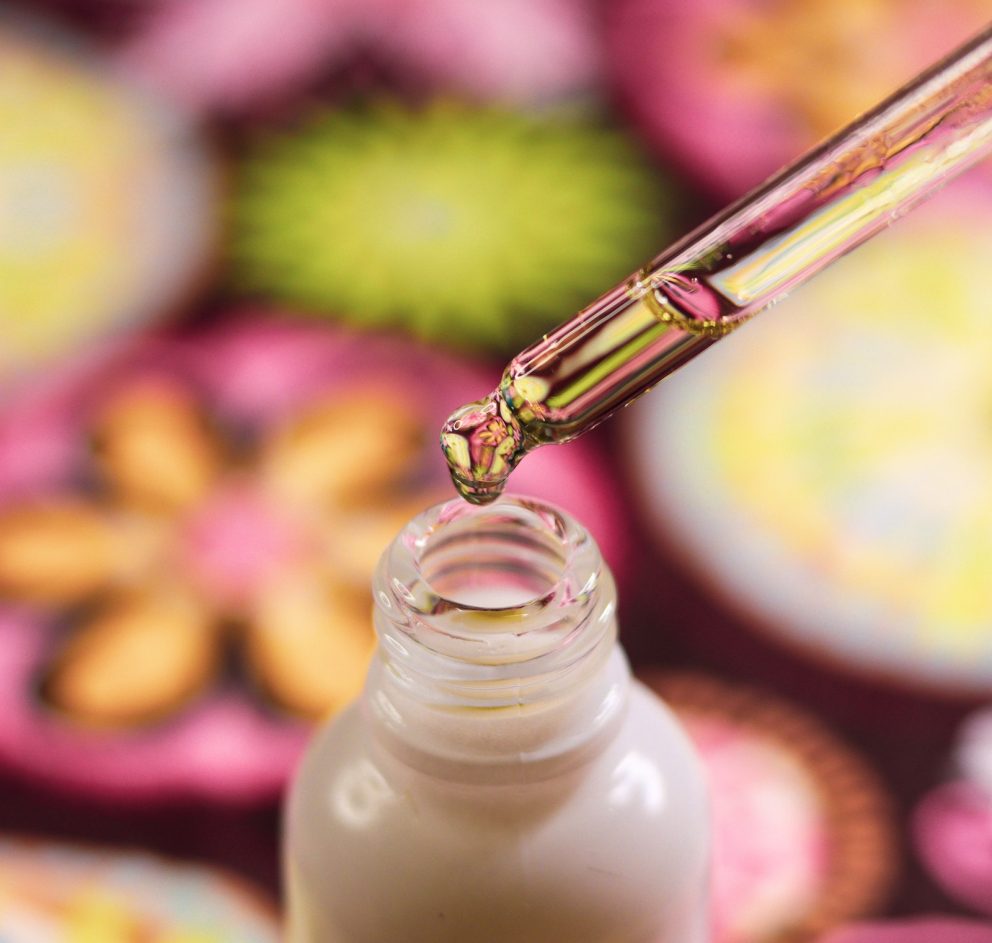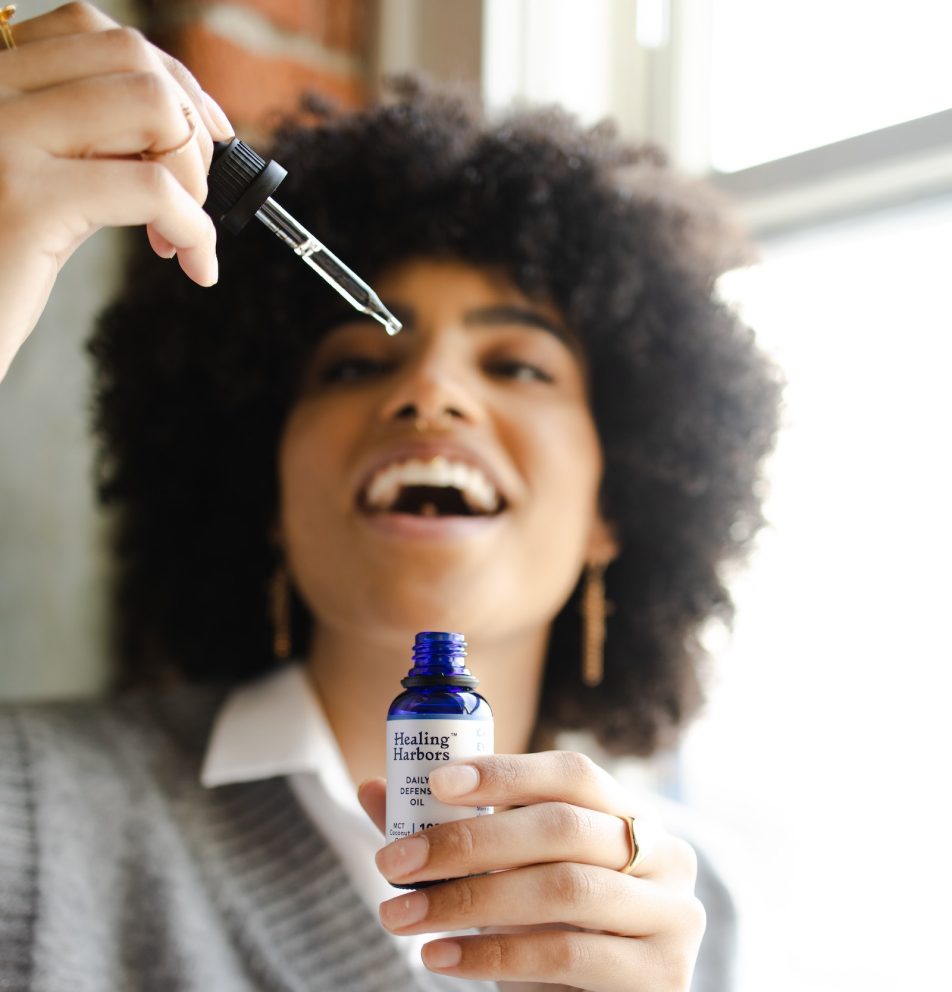What is a Tincture? Plus the Benefits of THC Tinctures

Photo by Dana Miller
Plant medicine is more than just a clever euphemism for medical marijuana. There is a movement to use plants and botanical products to treat various illnesses and symptoms. For centuries, the goal of plant medicine has been to use homeopathic treatments like tinctures to capitalize on the natural health benefits of plants.
Tinctures extract the best parts of herbs while potentially increasing their potency and shelf life.Tinctures can extract vital components of a plant while eliminating the parts of a plant that go bad.
With some alcohol and a little science, you can extract many of the nutrients from plants and even cannabis. Cannabis is a godsend of a large number of cannabinoids that all engage with a part of our body’s nervous system called the endocannabinoid system. You can cultivate cannabinoids using cannabis-based tinctures.
This article is a treasure trove of tincture tips and tricks from how to make a tincture with weed, how tinctures work, and even some helpful recipes.
What is a Tincture?
A tincture is a way to extract plant material using food-grade alcohol. Tinctures not only cultivate many of the healthful elements of a plant, they also help extend the shelf life by removing a lot of the plant matter which can rot, mold, or decompose.
Tinctures can be used to extract vitamins and other helpful compounds from plants. By soaking the leaves, tree bark, roots, or berries in alcohol or vinegar you can distill the parts of the plant that are not water-soluble.
As a plant, cannabis has many vitamins, cannabinoids, terpenes, and more. Popular cannabinoids like THC and CBD are oil soluble. That means they can bond with oil but not dissolve in water. Cannabis tinctures help you extract these cannabinoids.
Tinctures are similar to infused oils only rather than infusing oil you use alcohol or vinegar. The alcohol or vinegar in tinctures helps separate the active ingredients in the plant from the plant itself.
Tinctures often take a few days or even weeks to make. Over that time, the active ingredients separate from the plant matter and can be strained leaving you with a liquid concentrate.
Tinctures can help you more adequately dose yourself with the parts of a plant you want the most. This may be more than you’d normally use like a tincture of turmeric to help with inflammation or echinacea to help boost your immune system.
Tinctures are growing in popularity and can be found at many grocery stores and vitamin shops. 80% of people in the world rely on some sort of vitamin, supplement, or herbal product like a tincture as some part of their healthcare.
It is important to use caution when using supplements as they can offer higher concentrations of compounds than their natural counterparts. You will not know until you see how your body reacts.
Tinctures and herbal medicines can be unregulated which can mean the potential for toxic exposure, unwanted effects and some can be harmful during a pregnancy. Also, alcohol, the main ingredient in tinctures, should be consumed sparingly while pregnant.
All issues aside, with cannabis-based or green dragon tinctures, you’re able to cultivate cannabinoids like THC, CBD, or CBG to more effectively dose yourself with and receive the benefits of cannabinoids.
Apply for a Medical Marijuana Card Online Today
Join over 100,000 patients who have chosen Green Health Docs as their medical cannabis doctors. We have a 99% approval rate and offer a 100% money back guarantee!
Benefits of THC Tinctures
There are quite a few benefits of using THC tinctures. These can be ideal for patients using medical marijuana to dose themselves for pain relief or inflammation. THC tinctures are often fast-acting and concentrated which allows patients to quickly take high doses.
The alcohol, the concentration of cannabinoids, and being absorbed by the body sublingually (under the tongue) means they can enter your bloodstream as quickly as 10-15 minutes through capillaries under the tongue. Edibles can often take longer because your body has to break down the food component to get the cannabinoids into your bloodstream.
With tinctures, there’s cannabinoids readily available in the liquid and offers patients a discreet way to dose themselves with high potency cannabinoids. For people with chronic pain, this can be super helpful in providing quick relief.
There’s still limited research, but signs also point to alcohol helping to increase your body’s ability to absorb THC which can add to their efficacy. The reason tinctures are so effective is also because they more quickly enter your bloodstream.
How to Use Tinctures
Tinctures are easy to use. They’re often stored in brown dropper bottles to limit their exposure to air and light. Many compounds can be disturbed by light. Part of what makes weed products “expire” is THC will degrade when exposed to sunlight and oxygen.
How to Make a Tincture
Tinctures are easy enough to make with a fairly simple recipe. You simply put your desired ingredients into a jar. Again, your main ingredients can be dried or fresh herbs, bark, roots, or berries.
Pour alcohol or vinegar into the jar and then seal it. For fresh herbs, you will want to use a 1:1 plant-to-alcohol ratio. For dried herbs, use a 1:4 plant to alcohol ratio.
When selecting an alcohol you’ll want to also consider the plant’s water-soluble ingredients. Plants that have more water-soluble compounds need alcohol that’s 80–100 proof, while those with less water-soluble components need 180-proof alcohol.
Seal the jar for 6 or more weeks to give the alcohol time to absorb the active components of the plant. You will want to shake it occasionally to encourage absorption. When completed, you’ll want to strain the remaining plant matter from the liquid.
You can easily store them in a small dropper bottle. Be sure to choose a colored bottle to limit light exposure. To use, you simply load up your eye dropper or a small syringe and then release the liquid under your tongue.
Tinctures can also be easily added to recipes, combined with water or other beverages, but are best when used sublingually.
How to Take A CBD Tincture Sublingually in 3 Steps

Photo by Hazel Marie
Tinctures can seem intimidating or confusing but they’re pretty straightforward to use. Here’s three simple steps to properly dose yourself with a tincture.
- Select the Proper Dosage
Simply collect the proper dosage in the dropper. This can be a few drops or a few dropper-fulls depending on the tincture and your desired dose.
With store-bought tinctures it’s important to follow their dosage instructions. For homemade tinctures, we’ll cover how to properly understand their concentrations and select your dosage later in this article.
- Release the Liquid Under Your Tongue.
Lift your tongue and then squirt the eyedropper or syringe underneath your tongue. Allow the tincture to absorb. There are a large number of capillaries underneath your tongue that allow for greater absorption and better access to your bloodstream.
- Swallow Any Excess or Wash Your Mouth Out
Depending on how you feel you can swallow any remnants or rinse your mouth out with water. There’s little that can be done about the flavor of many tinctures so they can occasionally taste unpleasant or strongly of alcohol.
How to Make Tincture with Weed
As explained earlier, tinctures are easy enough to make at home. You simply need a food grade alcohol and some brown bottles to limit any unwanted chemical reactions. Light is the number one enemy of THC. It can cause your THC to degrade into the less psychoactive cannabinoid Cannabinol (CBN).
Another key to making a tincture with weed is that you’ll need to first decarboxylate your cannabis. Many of your favorite cannabinoids like THC and CBD exist as acids like THC-A and CBD-A in the cannabis plant. These acids, while similar and sometimes healthy, do not offer the same desired effects of cannabinoids.
To make a THC or CBD tincture you’ll want to decarb your cannabis flower.
Weed Tincture Recipe
The recipe for a weed or green dragon tincture is fairly straightforward. However, you will need a few different tools to ensure that you properly decarb your cannabis before you create your tincture.
To make a weed tincture you’ll need
- ⅛ ounce of cannabis flower.
- 2 ounces of high-proof alcohol, 70-to-120 proof preferred.
- An oven.
- A baking pan.
- A saucepan.
- Aluminum foil.
- A Mason jar.
- A thermometer.
- A pot.
How to Make Green Dragon Tincture
This recipe covers the key steps to the prep and creation of your cannabis tincture.
- Preheat your oven to 325 degrees Fahrenheit.
- Grind or cut your cannabis flower into very fine pieces. This increases the surface area and will also aid in absorption.
- Cover a shallow baking pan with aluminum foil and then add your ground cannabis.
- Bake the pan in the oven for 5 minutes to decarb your cannabis.
- Add the baked cannabis and alcohol to your mason jar and seal it.
- To speed up your tincture process rather than leaving it for weeks you can place it into a water bath. Place the mason jar into a pot of shallow hot water. Be sure the water only comes up to about half the side of the jar.
- Allow to simmer for 20 minutes. Use a thermometer to make sure the heat level stays at 170 degrees Fahrenheit.
- After 20 minutes, remove the jar from the water bath and let it cool.
- Strain the cannabis mixture to remove the plant material and pour your tincture into darkened bottles whether brown or green to help them retain their potency.
Speaking of potency it’s important to understand the potential strength of a THC or cannabinoid tincture.
How to Calculate The Strength of Tinctures
Tinctures are essentially concentrates so it’s important to know their full strength when taking them. Especially when making your own tinctures, you’ll want to have a clear idea for how much THC would be in the bottle.
Luckily, there is a formula to calculate the strength of a tincture.
You simply need to know:
- How much cannabis is in it (by weight)
- The THC content of that cannabis
- The ratio of concentrate to alcohol.
Tinctures can have anywhere from 1-6 grams of cannabis per 35 ml of alcohol. When making cannabis tinctures you can use this formula to approximate their strength.
The cannabis strain will impact the amount of THC and CBD in a single drop of the tincture.
You can find the percentage of THC and CBD in pretty much any strain when you purchase it.
For simplicity, let’s use simple numbers. Let’s say that the cannabis you selected was 20% THC and you used 2 grams.
Multiply the weight of the cannabis by its THC content. So for this tincture, 2 g X 20% = .4 g of THC. This would be 400 milligrams of THC.
Using the amount of alcohol and the ratio to the THC, you can find out how many mg of THC a standard dropper will contain.
For a tincture that uses 200 ml of alcohol, you’ll need to divide the total THC by 400.
So, you’re left with 200/400, which comes to around .5 mg/ml. That means that every ml dose contains .5 mg of THC.
How Much Tincture Can an Ounce of Marijuana Make?
If you follow the recipe mentioned earlier in the article, one full ounce of cannabis flower would make about 16 (fluid) ounces of tincture.
With regards to potency you can select different amounts of cannabis products to achieve different strength levels. Products like kief or hash will require far less plant material for an equally strong tincture.
Here’s some measurements to consider depending what part of the cannabis plant you use to make your tincture.
- Cannabis Flower: 30-40 grams
- Cannabis Leaf: 80-100 grams
- Kief or hash: 5-10 grams
- Cannabis Trim: 50 grams
How Long Does a Tincture Last in Your System
Tinctures are more fast-acting than edibles which need to be digested to enter the bloodstream. A tincture dosage can last anywhere from one to six hours but as long as 24 hours. Like edibles, high THC products can last super long in your system and their effects can take longer to resolve.
How Much Tincture Gets You High?
The breakdown of tinctures will vary but it requires an understanding of the full amount of THC in your tincture and how milligrams of THC affect you. Anything less than 2.5 mg of THC might be a microdose and not feel as potent as something with a 5 mg or higher amount of THC.
Additionally, given how fast-acting weed tinctures can be you may want to start with a lower tincture dosage at first. For a clearer picture on dosing THC products, check out our edible dosage guide in this article.
Selecting the right amount of THC will help you get the most from your cannabis treatment.
Tincture vs Edible
While similar to edibles, a tincture functions differently. Edibles are often combined with fats so they can readily be distributed to the body. As your body digests the fats of the edible the THC and other cannabinoids enter your bloodstream.
Those cannabinoids may not necessarily be as concentrated as with a tincture. You may need less tincture than you might need for an edible. How the body processes the cannabinoids in a tincture is subtly different from how your body digests an edible.
When consumed sublingually, you’re getting exposed to more cannabinoids immediately. This may mean you feel it faster and metabolize it more quickly. With edibles, your body will consume THC and other cannabinoids throughout digestion.
This means your overall experience will vary. It can compound as your body digests and absorbs more THC or change as other cannabinoids temper how THC affects you.
THC Drops vs Edibles
Additionally, THC drops, which are often THC-concentrated tinctures. Some tinctures will exclusively have THC for more concentrated effect and some tinctures are full spectrum and have other cannabinoids that will balance how all of these cannabinoids affect your body.
It’s important to know when selecting a tincture that some THC drops on the market may be tinctures of just THC or multiple cannabinoids. Be sure to ask when purchasing tinctures.
They can function similar to edibles in that your body will metabolize them over a longer period of time than you do when smoking weed.
Cannabis Tincture vs Oil
Similarly, a cannabis tincture is different from a canna oil. They may seem similar because one is an infused alcohol and one is an infused oil. With cannaoil, since cannabinoids are fat soluble they can enter into the body in the oil.
As your body digests the oil, the cannabinoids enter your bloodstream. With a tincture, the cannabinoids exist freely in the tincture and can enter your bloodstream sublingually. With a tincture most of the cannabinoids are absorbed sublingually with some digest and with cannaoil it can be the opposite.
Cannaoil effects can last a bit longer as they’re digested similarly to edibles. That means the effects of cannaoil can compound while the effects of a tincture may be more straightforward and steady.
Final Thoughts
A significant appeal to cannabis tinctures is they offer you simple doses of herbal medicine at your discretion. If you don’t enjoy smoking, tinctures can be fast acting and easy to metabolize, not to mention simple to make.
Consider applying for your medical marijuana card to be able to legally buy tinctures or the materials to make your own.
 This article has been reviewed by Dr. Anand Dugar, an anesthesiologist, pain medicine physician and the founder of Green Health Docs. Graduating from medical school in 2004 and residency in 2008, Dr. Dugar has been a licensed physician for almost 20 years and has been leading the push for medical cannabis nationwide.
This article has been reviewed by Dr. Anand Dugar, an anesthesiologist, pain medicine physician and the founder of Green Health Docs. Graduating from medical school in 2004 and residency in 2008, Dr. Dugar has been a licensed physician for almost 20 years and has been leading the push for medical cannabis nationwide.
